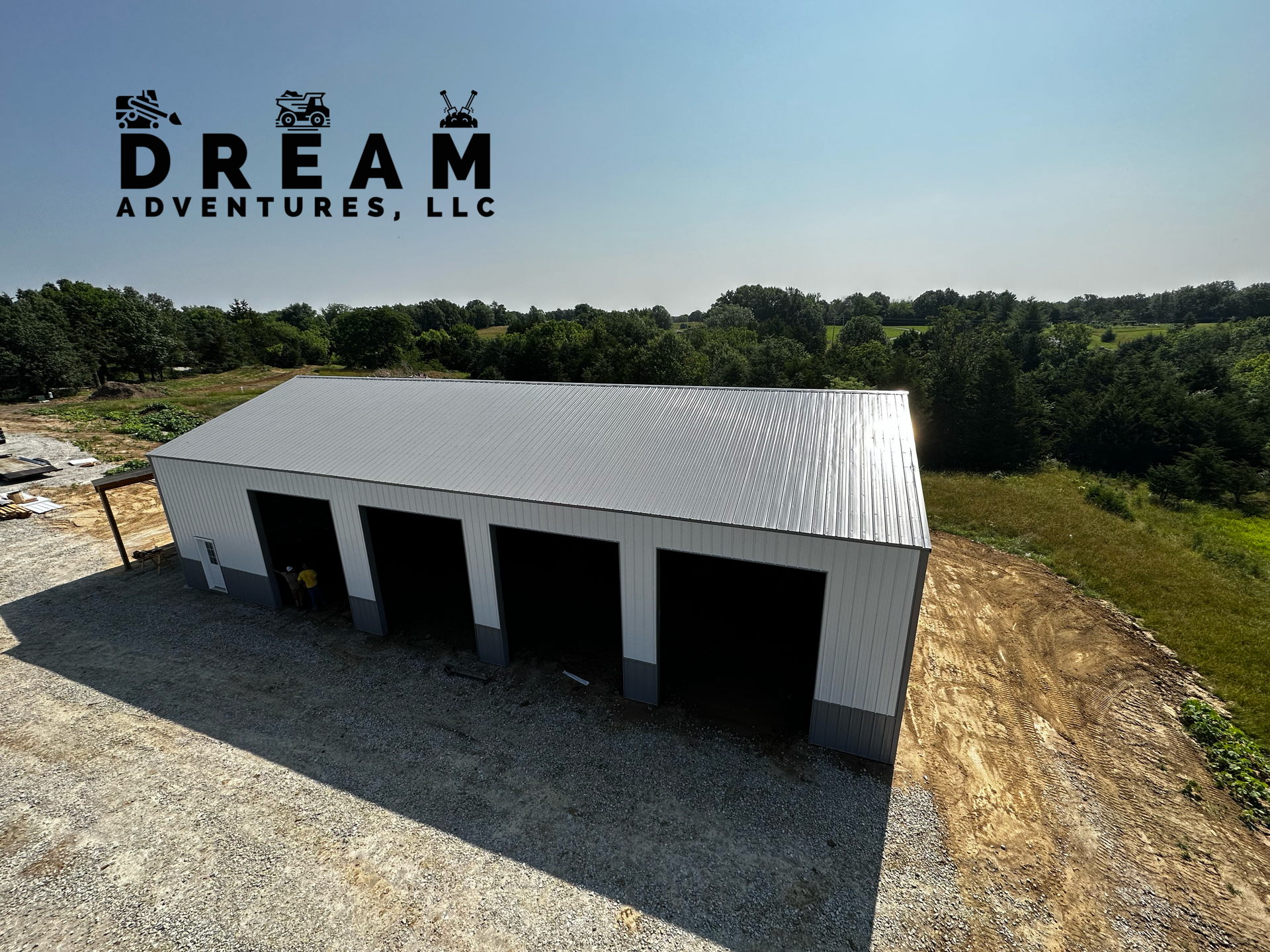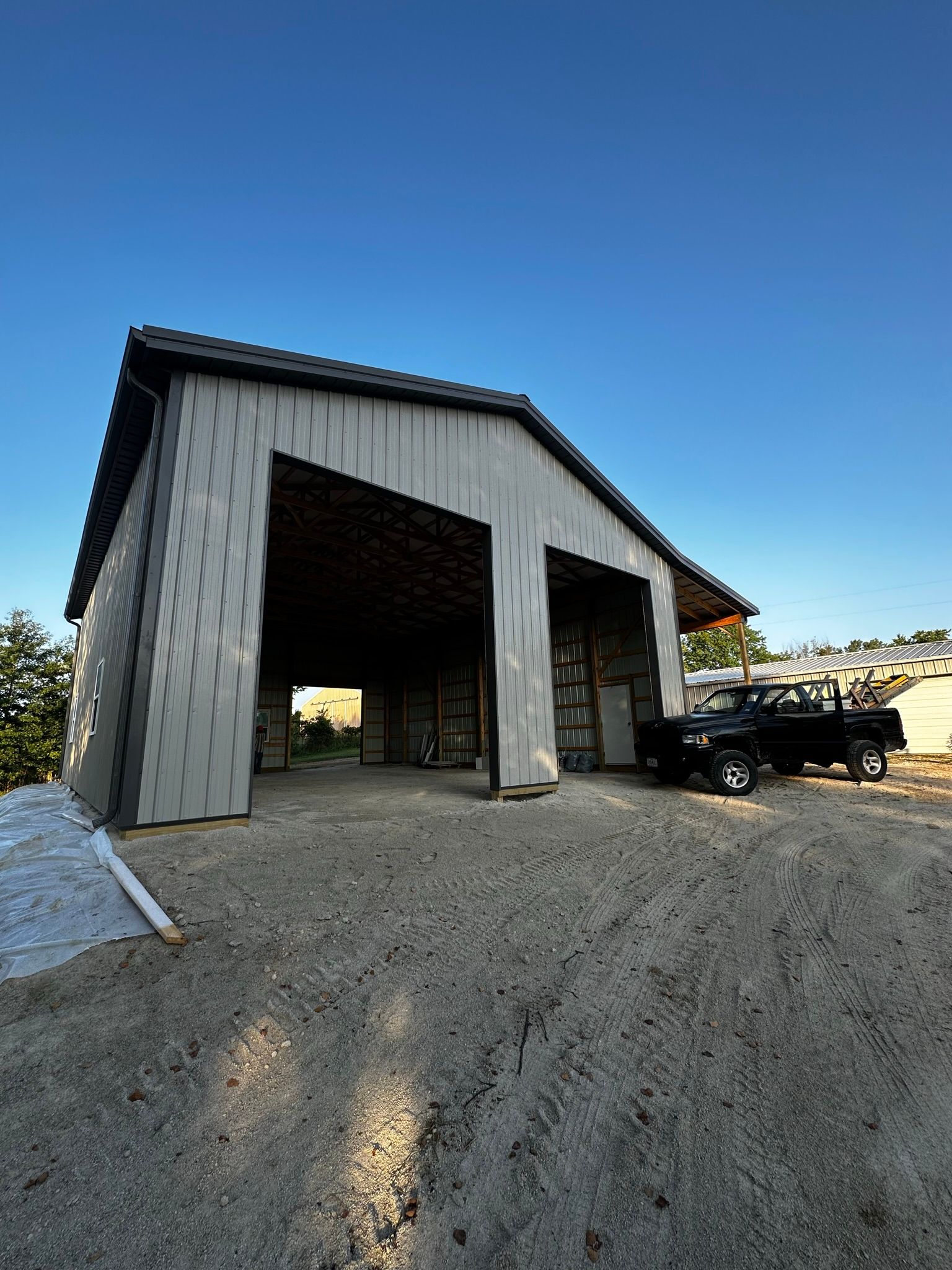Pole Barn vs. Post Frame: Which Building Style is Right for You?
Pole Barn vs. Post Frame: Which Building Style is Right for You?
When choosing a construction method for barns, storage buildings, or garages, two popular styles often come to mind: pole barns and post-frame buildings. These terms are frequently used interchangeably, but they do have distinctions. Both are versatile and cost-effective, but understanding their differences will help you determine which is the best option for your project.
In this article, we will explore the key features of both pole barns and post-frame structures to help you make an informed decision.
What is a Pole Barn?
A pole barn is a type of agricultural building that originated in the 1930s. These buildings gained popularity because of their simple construction process and the use of affordable materials, like telephone poles. Traditional pole barns rely on large poles (or posts) that are set into the ground, providing the foundation and structural support.
Pole barns are ideal for:
- Agricultural storage (such as for hay or equipment)
- Livestock housing
- Workshops and garages
- Simple residential structures
Key features of pole barns include:
- Affordability: Minimal materials and a simple design keep costs low.
- Speedy construction: With fewer components, these barns can be erected quickly.
- Wide open spaces: Without the need for interior support walls, pole barns offer open layouts for flexibility.
What is a Post-Frame Building?
A post-frame building is a more modern construction technique, closely related to the pole barn but with some differences. In a post-frame building, the primary structural support comes from laminated wood columns that are buried or set on concrete piers. This method improves the overall durability and versatility of the structure.
Post-frame buildings are often used for:
- Commercial buildings
- Residential homes
- Equestrian facilities
- Warehouses and storage units
Key features of post-frame buildings include:
- Superior strength and durability: Laminated columns provide excellent wind and snow load resistance.
- Energy efficiency: Due to better insulation options, post-frame buildings are more energy efficient, which can result in lower heating and cooling costs.
- Design flexibility: This construction style offers more customization options, including architectural elements like wrap-around porches or large windows.

Pole Barn vs. Post-Frame: Comparing the Two
While pole barns and post-frame buildings share similarities, they differ in terms of durability, design options, and usage potential.
1.
Cost
- Pole barns are typically less expensive upfront. They are an excellent option if you need a quick and affordable solution for agricultural storage or a workshop.
- Post-frame buildings tend to cost more initially because of the upgraded materials and foundation. However, they offer better energy efficiency and may save you money over time through lower maintenance and utility bills.
2. Durability and Longevity
- Pole barns, with their in-ground posts, may face issues with rot or shifting over time, especially in areas with poor soil drainage.
- Post-frame buildings are generally more durable. Their use of concrete piers or footings provides a more stable foundation, making them less susceptible to moisture and ground movement.
3. Aesthetic and Design Options
- Pole barns are often more utilitarian in appearance, making them great for storage or agricultural purposes but limited in design features.
- Post-frame buildings offer more customization. You can add features like larger overhangs, varied roof styles, and even decorative elements to enhance curb appeal.
4. Ease of Insulation
- Pole barns are harder to insulate effectively, which can lead to higher heating and cooling costs.
- Post-frame buildings are easier to insulate, thanks to their framed walls and enclosed structure. This makes them a better choice for residential or commercial use where temperature control is important.
5. Versatility of Use
- Pole barns are primarily designed for agricultural or storage use. They’re ideal for farms or properties where budget and simplicity are priorities.
- Post-frame buildings are more versatile. Their strength, design flexibility, and insulation options make them suitable for a wide range of uses, from homes to commercial spaces.
Which is Right for You: Pole Barn or Post-Frame?
Choosing between a pole barn and a post-frame building ultimately depends on your specific needs. If you’re looking for a budget-friendly solution for agricultural storage or a workshop, a pole barn may be the way to go. However, if you require a more durable, versatile, and energy-efficient structure, a post-frame building is likely the better option.


Conclusion
Both pole barns and post-frame buildings have their unique advantages. Pole barns are affordable and quick to construct, while post-frame buildings offer greater durability, energy efficiency, and design flexibility. By considering the purpose of your building, your budget, and the climate in your area, you can select the ideal building method to suit your needs.

